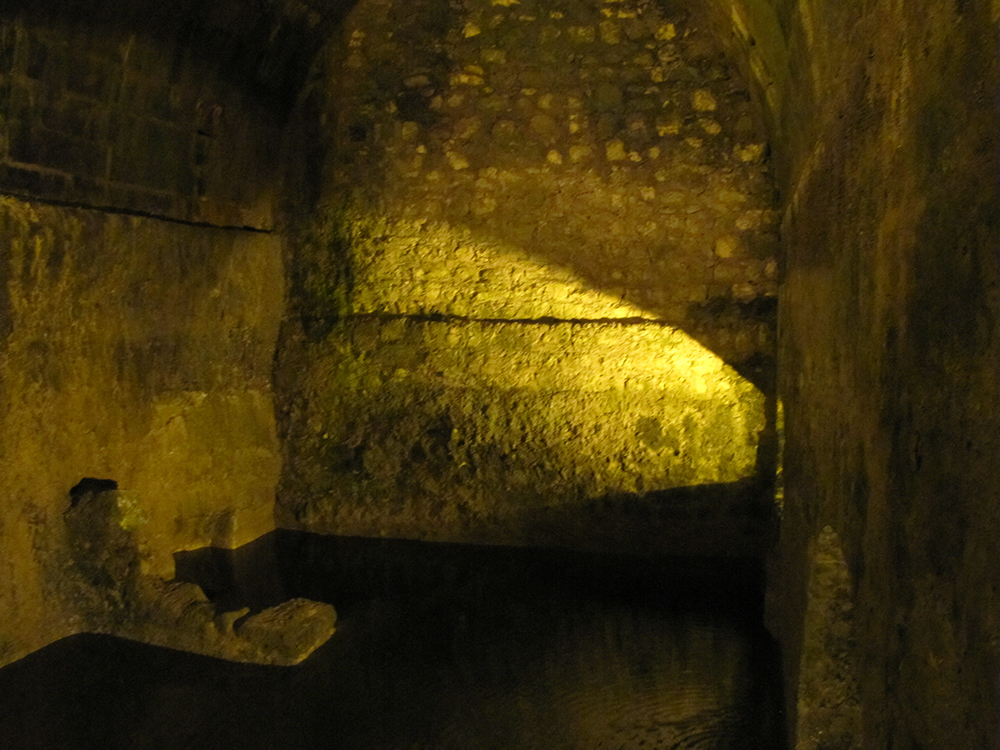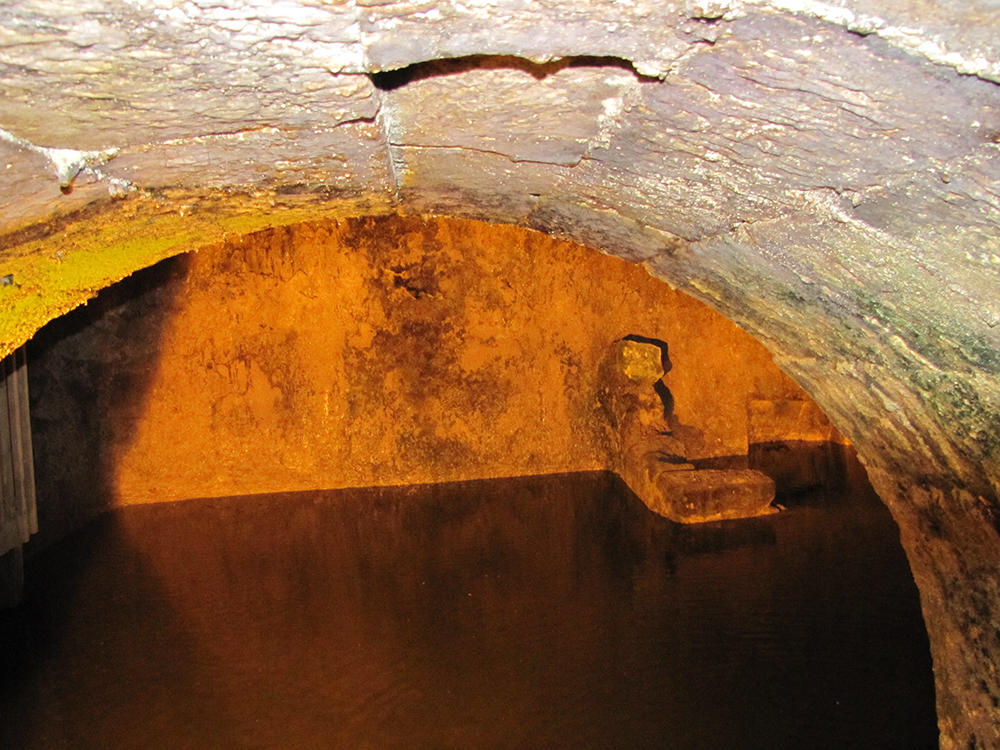
Section E New Testament
Chapter 56 - Struthion Pool
The Hasmoneans built an open air aqueduct to bring water from the north side of the Temple Mount into the city and the Temple Mount. The water was collected in the Struthion pool. Herod later cut through the aqueduct and converted the water supply into a moat and water reservoir around Fort Antonia. He continued to use the aqueduct to fill this pool, cutting off the supply of water to the city and the Temple Mount from this location. Josephus describes this reservoir and calls it Struthius (“sparrow” or “lark”). It was one of the smaller reservoirs in Jerusalem.
After Hadrian took the city in 135 he covered it with an arched roof to create water cisterns below, and then built a marketplace above. Hadrian’s arches split the pool into two halves. The pool was eventually forgotten until the Convent of the Sisters of Zion was built on this location in the 1800’s, and the pools were exposed. Today the Struthion Pool still collects water and can be seen at the north end of the Western Wall Tunnels.

The Struthion Pool measures about 171 by 46 feet and sets below the pavement of the plaza and market place supported by the vaulted arches built by Hadrian for his city Aelia Capitolina in 135 AD.

This is one of the vaulted arches built in 135 AD to cover this open aired Struthion Pool. The opening or hole seen in the top of the arch provided access from the pavement above to the water below by lowering a bucket on a rope.